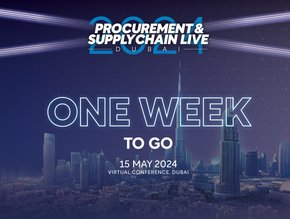Using RPA at Scale True Challenge of Automation Tech

Robotic process automation (RPA) is software technology that makes it easy to build, deploy, and manage software robots that mimic human actions. It is helping businesses optimise their supply chain networks by automating repetitive and time-consuming tasks.
This reduces errors, improves efficiency, and frees up resources for more value-added activities.
RPA has become one of the most important technologies for business transformation because its potential to improve business agility, operational performance and customer experience is massive.
According to Gartner, RPA is now seen as the second most important transformational technology by business leaders worldwide.
Those surveyed were looking for ‘improved business efficiencies’ and ‘increased profitability’ from their adoption of transformational technologies.
Areas of supply chain management in which RPA technology is deployed include automated order processing, inventory management, and shipping and receiving.
Because RPA automates tasks and processes rather than entire jobs, much of its value lies in it allowing organisations to re-assign staff to higher-value activities.
Typical tasks that RPA handles includes:
- Data entry, reconciliation, reporting and analytics
- Spreadsheet manipulation
- Systems integration
- Triaging and managing emails
- Customer outreach and communications
The supply chain benefits of RPA are clear enough. The challenge for businesses is being able to scale such solutions across an enterprise to deliver real and lasting business transformation.
This is where companies such as UIPath come in. UIPath is a leading RPA software company that provides a platform for businesses to automate repetitive and rule-based tasks. The New York-based company employs just under 4,000 people and was founded in 2005 in Bucharest, Romania, as DeskOver.
A UIPath use case is provided by E&J Gallo, the US-based winery and distributor, who needed a faster and more reliable way to transfer data to its enterprise resource planning system (ERP).
Although ERP systems provide greater visibility and synchronisation they come with hefty data-management requirements. An ERP platform is only as good as the data supporting it, and it takes a lot of time and energy to continually feed large ERP systems with the information they need, and this can result in functionality gaps when the system is up and running.
“We’re using RPA to enter master data faster,” says Robert Barrios, IT VP at E&J Gallo.
But he adds that, after using RPA to meet this need, the company then discovered other important uses for it.
“Now we’re also doing data-quality checks,” he says, “plus RPA is handling input of new-product versions into SAP. If you don’t RPA for that, it takes an army to enter a new version.”
Another UIPath customer using its solutions to good effect in its supply chain is Clariant, one of the world’s leading specialty chemical companies. Clariant is a focused and innovative specialty chemical company based in Switzerland that operates in 53 countries.
By implementing the UiPath Enterprise RPA Platform, Clariant has saved time, money, and materials in its invoice and shipping processes, with almost 50% of its invoice processing in one region now automatic. A more efficient shipping process has also eliminated 40,000 printouts per quarter.
Robert Enslin, CEO of UiPath, says the company is “pushing our boundaries beyond RPA”, as it seeks to deliver “the world's most powerful and easy-to-use AI-Powered Business Automation Platform”,
This distinction between RPA and automation is an important one, particularly with regard to understanding how businesses can scale automation solutions.
Speaking with Forbes, Ensslin says: “RPA generally just automates individual processes but doesn't know what processes either a human or a business needs to automate because those processes are not functioning well. So there's no intelligence in RPA. You have to provide it with intelligence.”
He adds that, when it comes to analysing an enterprise – in terms of what's working, what’s not, what's efficient and what isn’t – “AI is absolutely transformative, and can help businesses innovate in very meaningful ways”.
He continues: “When you add AI to automation it becomes even more impactful, and what we can do now is enrich the already existing AI automations at a different level.”
For Ensslin, UIPath’s solutions are not about what its technology does “but what our technology enables our customers to do”.
******
Make sure you check out the latest edition of Supply Chain Digital and also sign up to our global conference series - Procurement & Supply Chain 2024
******
Supply Chain Digital is a BizClik brand





